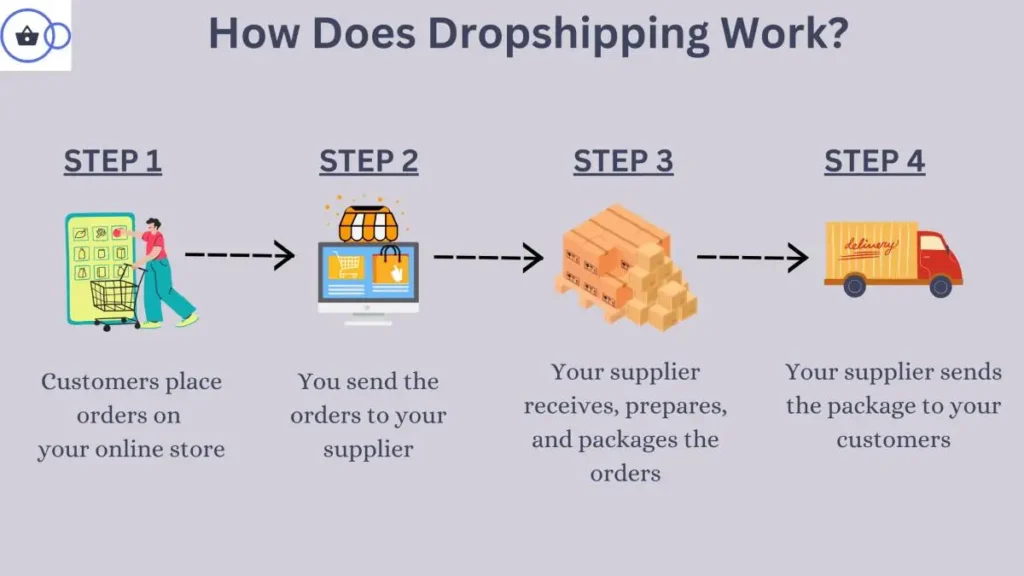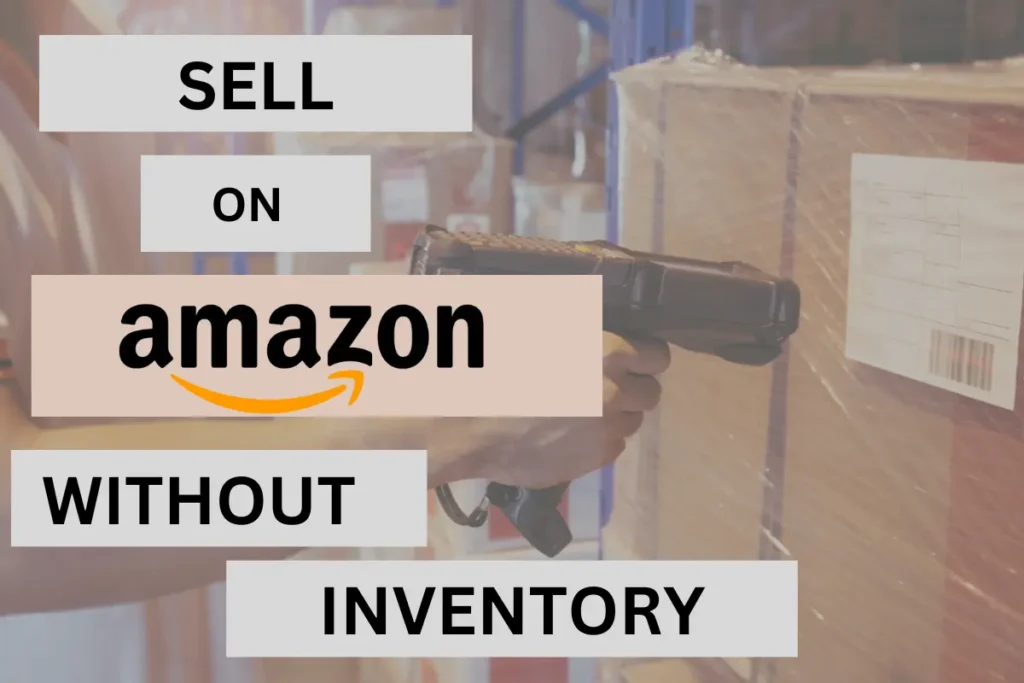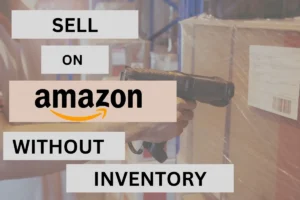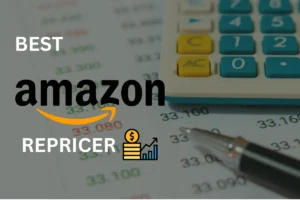Starting to sell things on Amazon might seem hard at first, especially if you think about having to find a place to keep all the stuff you want to sell.
The good news is that you don’t have to worry about finding a warehouse for your products or dealing with all the work of keeping track of a lot of items like in the traditional method of selling. There are easier ways to sell on Amazon without having to keep any inventory yourself.
In this blog, we’re going to talk about how to sell on Amazon without inventory. We’ll talk about what’s good about them and how you can get started. We’ll also share some tips on picking the right products, making your product listings better, and how to tell people about your Automated Amazon store.
What Are Your Options to Sell on Amazon Without Inventory?
When we talk about selling on Amazon FBA without inventory, it might sound like you don’t need any products at all. But in reality, it means you don’t have to buy and store inventory upfront in the traditional sense.
Instead, the methods listed below allow you to sell products without inventory initially:
- Dropshipping
- Amazon FBA
- Print On Demand
- Online Arbitrage
Dropshipping on Amazon
Amazon Dropshipping Software offers a unique opportunity to sell products without inventory. This model allows you to list items for sale, and when an order is placed, the product is shipped directly from the supplier to the customer.
This method eliminates the need for upfront investment in inventory and reduces the risk of unsold stock, making it an attractive option for new and established sellers alike.
How Dropshipping Works on Amazon

- Find a Supplier: Your first step is to find a reliable supplier with products you want to sell. These suppliers must be willing to ship products directly to customers on your behalf.
- List Products on Amazon: Once you’ve selected your products, you create listings on Amazon. You set the sale price, which should cover your supplier’s cost, Amazon’s fees, and your profit margin.
- Fulfill Orders: When a customer places an order, you purchase the product from your supplier, providing the customer’s shipping information. The supplier then ships the product directly to the customer.
- Manage Customer Service: You’re responsible for customer service and handling any issues that arise, such as returns or shipping problems.
Advantages of Dropshipping on Amazon
Let’s talk about a few advantages of Amazon Dropshipping.
- Low Start-Up Costs: Since you don’t need to purchase inventory upfront. You can start selling on Amazon FBA without inventory with minimal financial investment.
- Flexibility: You can offer a wide range of products without the risk of overstocking.
- Scalability: As your business grows, you can easily add more products to your listings without worrying about storage space.
Considerations:
- Supplier Reliability: Your business reputation on Amazon heavily depends on the reliability of your suppliers. Delays, quality issues, or stock shortages can directly impact your customer satisfaction and reviews.
- Profit Margins: Dropshipping margins can be slim, so it’s important to carefully manage your pricing and operational costs.
- Amazon’s Policies: Amazon has specific policies for dropshipping. You must ensure that orders are fulfilled promptly, and you’re not allowed to include any third-party boxes or promotional materials in shipments. It’s crucial to familiarize yourself with these guidelines to avoid any issues with your seller account.

- The good news is that there’s a way to ensure your compliance with this Amazon policy while maintaining your dropshipping business model on Amazon. You can do this with the help of Ecom Circles Tools. More on this later in the blog.
Dropshipping on Amazon can be a rewarding venture if approached correctly. It requires diligent research, effective management, and a commitment to providing excellent customer service.
Amazon FBA (Fulfillment by Amazon)
Amazon FBA (Fulfillment by Amazon) is a service designed to make online selling easier for entrepreneurs by outsourcing the storage, packing, and shipping of products to Amazon. It is another excellent way to sell on Amazon without inventory.
With FBA, you send your products to an Amazon fulfillment center, and Amazon takes care of the rest, including customer service and returns. This method is ideal for sellers who want to scale their business without dealing with the logistical headaches of order fulfillment.
How Amazon FBA Works
- Send Products to Amazon: You decide which products you want to sell through FBA, ship your inventory to Amazon’s fulfillment centers, and Amazon stores your products.
- Amazon Lists Your Products: Your products are listed on Amazon with a Prime badge, making them more attractive to Prime members due to benefits like free two-day shipping.
- Amazon Fulfills Orders: When a customer places an order, Amazon picks, packs, and ships the product on your behalf. They also handle customer service and returns for these orders.
- You Manage Your Inventory: Through your Amazon seller account, you can monitor your inventory levels, manage listings, and replenish stock as needed.
Advantages of Amazon FBA:
- Prime Eligibility: FBA items are eligible for Amazon Prime, which can significantly increase your sales potential due to the vast number of Prime subscribers looking for fast, free shipping.
- Scalability: Amazon’s vast logistics network allows you to scale your business globally without worrying about the details of shipping and handling.
- Customer Trust: Products fulfilled by Amazon are more likely to be trusted by customers, potentially leading to higher conversion rates.
Considerations:
- Costs: While FBA can save you time and hassle, it comes with fees for storage, fulfillment, and additional services. It’s important to understand these fees and incorporate them into your pricing strategy.
- Inventory Management: Effective inventory management is crucial to avoid long-term storage fees or stockouts, which can affect your sales.
- Product Selection: Not all products are suitable for FBA, particularly those with low turnover, high fees, or complex shipping requirements. It’s important to select products that will benefit most from the FBA model.
Amazon FBA is a powerful tool for sellers looking to leverage Amazon’s extensive logistics network to grow their business. By allowing Amazon to handle the complexities of fulfillment, sellers can focus more on product selection, marketing, and scaling their operations.
Print on Demand (POD)
Print on Demand (POD) is a flexible way to sell on Amazon without inventory.
This model allows you to offer items such as books, t-shirts, mugs, and more, which are only printed or created once a customer makes a purchase.
POD is perfect for creative entrepreneurs who want to sell custom merchandise or authors looking to publish their work without the upfront costs of traditional publishing.
How Print on Demand Works on Amazon:
- Create Your Designs: Start by creating your custom designs or written content. This can be anything from graphic designs for apparel to the manuscript of a book.
- Choose a POD Service: Select a POD platform that integrates with Amazon. Some POD services directly connect to your Amazon seller account, making the process seamless.
- List Products on Amazon: Create product listings on Amazon for your POD items. When a customer places an order, the POD service is automatically notified.
- Production and Fulfillment: The POD service prints or creates your product and ships it directly to the customer on your behalf. You don’t have to handle any of the production or shipping processes.
- Customer Service: While the POD service may handle the production and shipping, you’re responsible for customer service, including handling returns and answering customer inquiries.
Advantages of Print on Demand:
- Low Risk: There’s no need to buy inventory upfront, significantly reducing the financial risk. You only pay for the cost of goods when a customer makes a purchase.
- Unlimited Inventory: Since products are made to order, you can offer an unlimited number of designs without worrying about unsold stock.
- Customization: POD allows for a high degree of product customization, enabling you to cater to niche markets or capitalize on trends quickly.
Considerations:
- Profit Margins: While POD offers lower upfront costs, the cost per item can be higher than bulk purchasing, potentially resulting in lower profit margins.
- Quality Control: Since you’re not handling the products directly, maintaining consistent quality can be challenging. It’s important to choose a reputable POD service.
- Brand Building: Creating a strong brand can be more challenging with POD products, as the packaging and branding opportunities are limited compared to traditional inventory methods.
Print on Demand on Amazon is an excellent option for sellers interested in offering custom or creative products without the complexity of inventory management. It’s particularly appealing to those who wish to test product ideas or target niche markets with minimal upfront investment.
Online Arbitrage
Online Arbitrage involves buying products from online retailers at a lower price and then selling them on Amazon at a higher price. This method lets you sell products without inventory in the traditional sense, making it a profitable model.
Unlike traditional retail arbitrage, which requires visiting physical stores to find discounts or clearance items, online arbitrage can be done entirely from your computer, making it a convenient option for sellers who prefer digital hunting for deals.
How Online Arbitrage Works on Amazon
- Research and Identify Profitable Products: Use tools and techniques to find products online that are being sold at a lower price than their average selling price on Amazon. This involves understanding Amazon’s fees, shipping costs, and competitive pricing.
- Purchase Products: Once you’ve identified a profitable product, purchase it from the online retailer. Consider factors like shipping times and costs, as these will impact your margins and customer satisfaction.
- List the Products on Amazon: After receiving the products, create listings on Amazon. You can use the Fulfilled by Amazon (FBA) program to handle shipping and customer service, or fulfill orders yourself.
- Ship and Fulfill Orders: Depending on your fulfillment method, either send your products to Amazon’s fulfillment centers or store them yourself for direct shipping to customers when orders are placed.
Advantages of Online Arbitrage
- Flexibility: You can operate your business from anywhere, as long as you have an internet connection and a means to receive and ship products.
- Scalability: With the right tools and strategies, you can scale your online arbitrage business by increasing the number of products you sell or expanding into different categories.
- Low Entry Barrier: Online arbitrage can be started with a relatively low upfront investment compared to purchasing wholesale or manufacturing your own products.
Considerations
- Time and Research: Successful online arbitrage requires significant time spent researching products and monitoring price differences across platforms.
- Competition: The online arbitrage space is competitive, with many sellers using similar tools and strategies to find deals, which can quickly erode profit margins.
- Risk of Account Suspension: Amazon has strict policies regarding product sourcing and authenticity, especially with online arbitrage. It’s crucial to keep invoices and records of purchases as proof of legitimate sourcing to avoid potential issues with your seller account moreover, you cannot send items to your customers in boxes of other online retail stores, e.g. Walmart. Just as we mentioned earlier in the dropshipping model, there’s also a way around this by using Ecom Circles tools.
Online Arbitrage is a viable method for sellers looking to capitalize on the price discrepancies between different online marketplaces without the need for traditional inventory.
It, however, demands diligence in research, careful planning, and adherence to Amazon’s policies to ensure a profitable and sustainable business model.
Key Strategies for Success
Successfully selling on Amazon without inventory involves more than just choosing the right fulfillment method. To truly thrive, sellers must adopt a comprehensive approach that encompasses market research, optimization, and customer engagement.
Below are key strategies that can help you succeed in the competitive Amazon marketplace.
1. Market Research
Continuously analyze the market for trending products, pricing strategies, and customer demand. Use tools like Amazon’s Best Sellers list, Google Trends, and social media to identify popular items and niches.
Dive deep into customer reviews and feedback on Amazon and other platforms to understand what buyers love, what they don’t, and what they wish for in products. Tailoring your offerings to meet these needs can significantly boost your sales.
2. Optimize Your Listings
IUse Amazon SEO practices by using relevant keywords in your product titles, descriptions, and backend search terms to improve visibility and ranking.
Use clear, high-resolution images that showcase your products from multiple angles. Consider investing in professional photography to make your listings stand out.
Write detailed, benefit-focused product descriptions and bullet points that address common customer questions and highlight your product’s unique selling points.
3. Leverage Amazon’s Marketing Tools
Use Amazon’s pay-per-click advertising to increase the visibility of your listings. Target relevant keywords and continuously optimize your campaigns based on performance data.
Participate in Amazon’s deal programs, such as Lightning Deals or Coupons, to attract more customers and boost sales, especially during peak shopping seasons.
4. Use Ecom Circles Tools
Utilizing Automated Dropshipping software and Ecom Circles Extension offers a robust advantage for those looking to sell on Amazon without inventory.
Remember when we talked about Amazon’s dropshipping policies, where they frowned on shipping third-party packaging to customers?
Well, the Ecom Circles Automated Dropshipping software addresses these Amazon policies by employing a two-step dropshipping process, ensuring compliance and enhancing customer experience. It is ideal for selling on Amazon without inventory.
Moreover, with the Automated Dropshipping software, you also gain access to a curated list of over 30 suppliers who regularly offer promotions, enabling efficient and profitable online arbitrage.
This integration not only streamlines operations but also significantly boosts Amazon’s likelihood of success, providing sellers with critical tools to navigate the competitive marketplace effectively.
So, sign up for the Ecom Circles Automated Dropshipping Software to enjoy automation that handles stock, repricing, and order placement for you. Also, install the Ecom Circles Extension to utilize the power of sales data.






